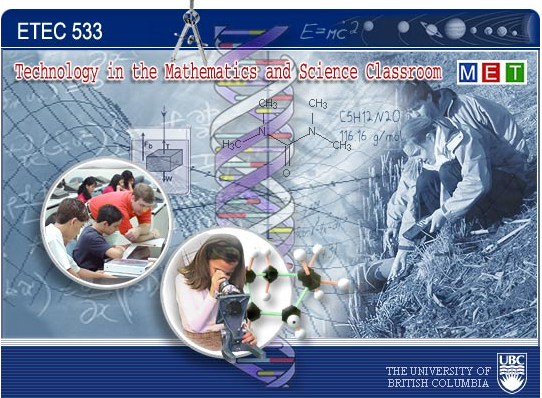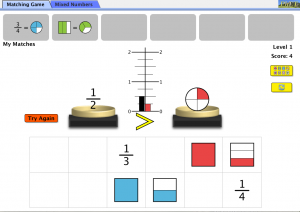I did like the PHET simulations. I enjoyed playing with one more specifically as it relates to the present subject taught in my classroom : Fraction matcher . This simulation looks like some manipulatives of fractions we have in class. You match the selected fractions using numbers and pictures. Learners who have the right answer will receive a congratulations message and those who miss will be asked to try again (as in the picture below)
STEM Activity
« Simulations are available to support instruction in many areas of science and engineering» (Srinivasan, 2006), and I would add mathematics as well. In my own classroom, at this point in curriculum, we are studying fractions and we are comparing them together to understand multiple ways of representing fractions. One misconception I observe is that students often compare fractions together, without having them on the same denominator.
In this example, I will use the T-GEM exercise to have them understand fraction matching. As mentioned by Driver et al. (1994), « The core commitrnent of a constructivist position, that knowledge is not transmitted directly from one knower to another, but is actively built up by the learner, is shared by a wide range of different research traditions relating to science education. » Simulations should offer my students another way to see, experiment and understand fractions.
Step 1. Previous Knowledge
First, students should have some language basis around fractions and the different parts of that concept. In a constructivist approach, where the learner« explains human learning as an active attempt to construct meaning in the world around” him (Fritscher, 2008), students would build on previous knowledge.
Step 2. Play
Here, Students would be invited to play with the model presented. They would discuss with their peers what is happening and what they are doing. Finkelstein et al. (2005) stated that properly designed simulations used in the right contexts can be more effective educational tools than real laboratory equipment. « This play can lead to the organization of students’ knowledge and its alignment with … models. Depending upon how these tools are used, messing about may or may not be productive. » (Finkelstein, 2005)
Step 3. Directed Play
To be assured that students were going in the right direction with these simulations, I would ask a few specific questions to make sure they understand the concept, like :
– How do you know that 2/3 is equivalent to 8/12 ?
– Explain how you know which of these two fractions are bigger: 3/4, 5/6?
– What is a fraction ?
Step 4. Analysis
In groups of 2 or 3, students would discuss the reasons why it is happening like this. They would have to come up with a solution to be able to explain how fractions are equivalent or not. Together, they would build their knowledge and understand the concept, supported by the simulation. Driver et al. (1994) stated that simulations are available to support instruction in many areas of science… and math.
Step 5. Synthesis
To further extend their understanding, I would ask students to recreate multiple fractions comparisons in real life, in the school. And from there, they could demonstrate their learning to younger ones, let’s say grade 3s or 4s. From this experimentation, we could build our knowledge gain together and define the concepts we learned.
Through this whole experience, both learners and teachers would have build knowledge together and create possibilities for discussions and thinking.
Reference :
Finkelstein, N.D., Perkins, K.K., Adams, W., Kohl, P., & Podolefsky, N. (2005). When learning about the real world is better done virtually: A study of substituting computer simulations for laboratory equipment. Physics Education Research,1(1), 1-8. Retrieved April 02, 2012, from: http://phet.colorado.edu/web-pages/research.html .
Fritscher, L. (2008, May 09th). Constructivism. Retrieved from :
http://phobias.about.com/od/glossary/g/constructivdef.htm
Srinivasan, S., Perez, L. C., Palmer,R., Brooks,D., Wilson,K., & Fowler. D. (2006). Reality versus
simulation. Journal of Science Education and Technology, 15 (2), 137-41. http://ezproxy.library.ubc.ca/login?url=http://dx.doi.org/10.1007/s10956-006-9007-5

